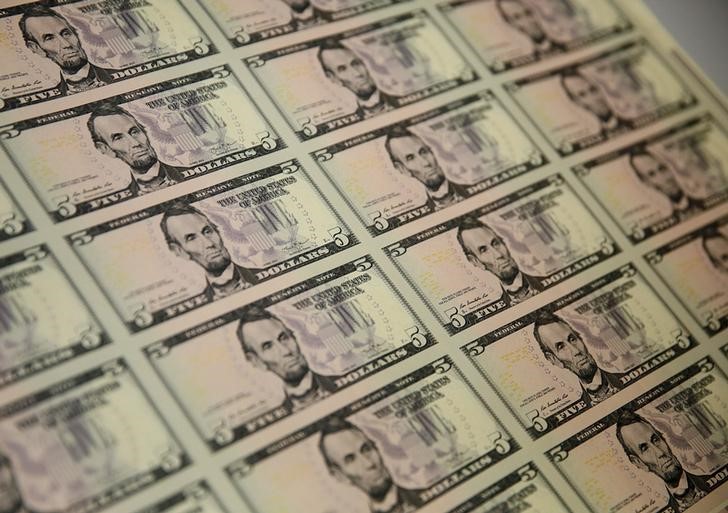Investing.com - The dollar pared gains against a basket of other major currencies in thing trade on Monday, but remained supported by growing expectations for a U.S. rate hike in the coming months.
Demand for the dollar remained supported by expectations for higher interest rates, as investors regained confidence that the U.S. economy would continue to recover after recent economic reports pointed to a slowdown at the start of the year.
The U.S. dollar index, which measures the greenback’s strength against a trade-weighted basket of six major currencies, was up 0.11% to 99.74, just under one-month highs of 100.27 hit earlier in the session.
EUR/USD was down 0.24% to 1.0577, off one-month lows of 1.0521.
Sentiment on the euro remained vulnerable amid ongoing uncertainty over Greece’s bailout. Talks between Athens and its lenders on proposed economic reforms were expected to resume later Monday, ahead of a meeting of euro area finance ministers on April 24.
The pound pulled away from five-year lows of 1.4566, with GBP/USD last at 1.4649, up 0.11% for the day.
Sterling remained under pressure after data on Friday showed that U.K. industrial production edged up 0.1% in February, undershooting forecasts of a 0.4% gain.
The smaller than expected increase in industrial output was due in large part to a 12% annual decline in oil and gas production, the largest drop since August 2013.
The soft data sparked concerns over the outlook for first quarter U.K. growth.
Elsewhere, the dollar was steady against the yen, with USD/JPY at 102.20 and lower against the Swiss franc, with USD/CHF slipping 0.12% to 0.9779.
The Australian, New Zealand and Canadian dollars were broadly weaker, with AUD/USD tumbling 1.34% to 0.7579 and NZD/USD losing 1.25% to 0.7445, while USD/CAD gained 0.21% to trade at 1.2592.
The export-related currencies came under pressure after data earlier showed that China's trade surplus narrowed to $3.08 billion in March from $60.60 billion the previous month. Analysts had expected the trade surplus to narrow to $45.35 billion last month.
China is Australia's biggest export partner and New Zealand's second biggest export partner.
